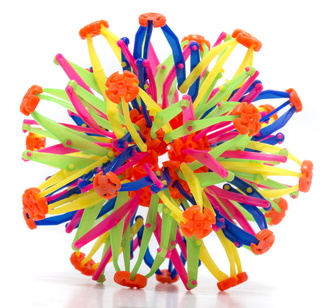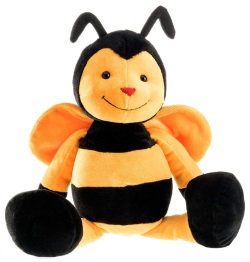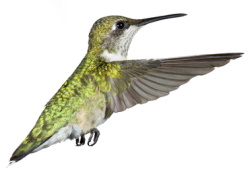 All I need is the air that I breathe
All I need is the air that I breathe
Learning breath control for any wind instrument is an important foundation skill. It will develop naturally the more you play, but at the outset it is worth identifying the different ways we breathe and how we can harness these for the harmonica.
Adding breathing exercises to our routine will greatly benefit our playing in the long term. We will manage long notes more easily, and navigate long sequences of drawn or blown notes more comfortably. We will also manage changes in dynamics more efficiently, building crescendo and diminuendo skills. Most importantly, our tone will improve immeasurably.
At the core of this discipline, we are learning to control our natural fear of running out of breath, or drowning. Imagine yourself as a snorkeler. You rely on a tube for breathing, but you can also resurface if you have to. There’s no need to panic. Learn to relax and manage your breath like a snorkeler, focusing instead on the underwater panorama; this is your music making.
Let’s investigate breath control first using some useful physical exercises. We can then look into scale-based exercises that will bring this into our music making. Our objective is to breath from deep down in our abdomen rather than from our shoulder up! So if you feel your cheeks billowing and you can hear breath rushing through your lips, you’ve either stubbed a toe our you need to connect with your diaphragm. Here’s how..
Fake Yawn
 Bending your arms, push out your elbows perpendicular to your body and yawn deeply. As you start yawning, you take in air without any interruption from your lips, tongue, or throat. As you finish, you exhale warm air uninterrupted from your chest and abdomen. This is the perfect way to open your airways and feel the column of air you’ll need for good breath control, full tone and ‘unbent’ note playing.
Bending your arms, push out your elbows perpendicular to your body and yawn deeply. As you start yawning, you take in air without any interruption from your lips, tongue, or throat. As you finish, you exhale warm air uninterrupted from your chest and abdomen. This is the perfect way to open your airways and feel the column of air you’ll need for good breath control, full tone and ‘unbent’ note playing.
 Warm hands
Warm hands
Remember how we use our breath to warm cold hands in the winter? The push of our diaphragm feeds a column of warm air from deep down. Once again there is nothing interrupting the airflow. This is diaphragmatic breathing. An alternative is when we steam a bathroom mirror as kids and draw funny faces with our fingers. Another is when we huff warm air on a pair of glasses, then wipe away the condensation to clean the lens.
Sustain a note
Using any note you choose, simply inhale or exhale from your diaphragm. Keep the delivery nice and steady at a medium volume for as long as you can. 10 to 15 seconds is a good start, but see if you can increase this over time. As you do so, pay attention to your tone. Could it be deeper? Could it be warmer? For lip pursers, relax your jaw and let your tongue fall down and back as it did when you yawned. For tongue blockers, relax and open up your throat.
Crescendo & Diminuendo
Take any note, blow or draw. Start playing at the lowest volume you can (pianissimo). Gradually increase the volume (crescendo) to the highest level you can manage (fortissimo) without throttling the reed. With the same breath, slowly decrease the volume (diminuendo) back to pianissimo. Try to keep the crescendo and diminuendo phases even, creating a transitional arc. This exercise promotes good breath control.
 Hoberman Sphere – fun version
Hoberman Sphere – fun version
Using a Hoberman Sphere we can really connect with our diaphragm visually. Here’s a story I tell my younger learners about my a to the local wildlife park. Stick with it. The underlying message works just as well for adults and coincides with yogic breathing, which may be more familiar for some.
Bunny breathing
The first animal I saw was a rabbit. Bunnies do everything really quickly. Wiggle your nose like a bunny. With lips closed now, take three sniffs in through your nose and fill your lungs. Pursing your lips and pushing from your diaphragm, empty your lungs again with three bursts of air.
Placing the open palm of one hand on your abdomen, do the whole thing again. Notice how your lips provide resistance as your diaphragm pushes from deep down. This is how we play short notes on the harmonica.
 Porcupine breathing
Porcupine breathing
The next animal I saw was a pork pie. Let me try that again. The next animal I saw was a porcupine. It was starting to hibernate. That means it was going to sleep for the winter and breathing really slowly. Through pursed lips now, breathe in slowly and fill your lungs. Hold your breath for a count of four, then slowly exhale as I count down from 10 to 1. This is how we play the long notes on our harmonica. Let your shoulders drop and relax as you exhale. It’s great for de-stressing.
Slow puncture
I had a lovely day at the wildlife zoo and saw lots more animals, but as I drove home something went wrong with my car. I got a puncture and my tyre started hissing like a snake. Inhale like porcupine breathing again, but this time as you slowly exhale, hiss like my punctured tyre. Feel the push from your diaphragm once again.
Breakdown service
Fortunately I called the breakdown service and an engineer arrived with a big pump. He pumped air into the tyre three times; take three breaths in through pursed lips as he pumps. It didn’t work. Hiss out slowly through pursed lips. He tried again. Take three breaths in through pursed lips once more. But that didn’t work either. Hiss out slowly through pursed lips again. Luckily the third time everything worked fine.
Sudden fright
 Just as the breakdown engineer was leaving, a great big bumble bee buzzed past his nose. He threw his hands up and gasped in surprise. Here comes the bee. Everyone throw your hands up and fill your lungs in one big gasp of surprise. There’s your inhaled column of air.
Just as the breakdown engineer was leaving, a great big bumble bee buzzed past his nose. He threw his hands up and gasped in surprise. Here comes the bee. Everyone throw your hands up and fill your lungs in one big gasp of surprise. There’s your inhaled column of air.
Busy bee
No need to worry, it was my friendly pet, Higgledy-Piggledy Bumble Bee. She came to tell me it was teatime and would guide us home. I thanked the engineer and off we went. Take a deep breath, hold it for a count of four, and slowly buzz out like a bee as we count down from 10 to 1. Focus on your diaphragm one last time as you control your buzzing. How long can you keep this going after we’ve counted down to 1?
 Humming Bird
Humming Bird
When we arrived home, Havana my pet Humming Bird was there to welcome us. Take a deep breath and hum as you exhale. See if you can make your noes and ears tickle.
Inhale and top up
After all that breathing out and a long day at the wildlife park, I felt quite tired and needed a nap. I pushed out my elbows and stretched. As I did so, I slowly breathed in through my lips until I was full. Holding my breath, I dropped my elbows, closed my lips and sniffed in some more air through my nose. It’s amazing just how much more I could take in, as I filled the top of my lungs. I started to slowly let the air out one last time, and before I knew it, Zzzzzzzzzzzzzzz.
Nasal cavity
Awareness of our nasal cavity function is also important for playing the harmonica. To become fully aware of your nasal cavity location, go back to the Bunny Breathing above and, with lips closed, see if you can work six short sniffs in and five snorts out working from your diaphragm. Be vigorous. Now let’s consider the role of the nasal cavity when it comes to playing the harmonica.
Any air that’s not passing through the harmonica leads to a weaker, leaky tone. It also means you can’t sustain notes for very long. This not only includes breath escaping by way of an embouchure that isn’t airtight (not having your lips placed right around the harmonica mouthpiece and touching the cover plates), but sometimes by allowing air to flow through your nasal cavity. Conversely, by blocking off the nasal cavity, we can inadvertently overload and bend the lower draw reeds, producing a flat or unappealing sound. So it’s a question of balance: air flow versus reed pressure to achieve the natural pitch. In time you will learn to coordinate these forces to find the point of equilibrium and deliver your draw reed’s natural note, while also enjoy a richer tone.
If you’re not sure how to block off your nasal cavity, there are ways we can relate to this. The first might be when we have a head cold and sound ‘adenoidal’ when we speak because of our blocked airways. Another might be when we swim underwater and naturally prevent water from passing up our nostrils by isolating our nasal cavity internally. If these don’t help, pretend to hold a balloon, inflating and deflating it with one breath. You can also do this pressing your lips against the back of your hand and feeling your cheeks move outward and inward.
Dynamics and Articulation
Our final top tip for this page is to start applying your new found breath control using simple scales. Start with something as basic as the Major Scale 4B 4D 5B 5D 6B 6D 7D 7B but review your plan of attack. Firstly take a deep breath in, sigh out and rest your tongue. Methodically and one hole at a time, play at a whisper (pianissimo).
Starting with 4B from the scale above, how long can you hold the note at this quiet level and keep your delivery consistent? Using the same note, go again but increase the dynamic level to medium loud (mezzo forte). Remember to extend the note, keeping it accurate, full toned and consistent. Next, using the same note, increase your dynamic to loud (forte), without throttling or forcing the note. Accuracy, good tone and consistency are key to this exercise.
 Finally we need to introduce differentiation. In one breath, start really quietly, gradually increase the volume to loud, then take it back to a whisper. This is how we add light and shade to our playing. Growing louder is called crescendo. Growing softer is called diminuendo, or decrescendo. If you can do all this successfully, you’re working from a position of control, balance and with good tone. Take this exercise and apply it to each of the remaining notes along the scale.
Finally we need to introduce differentiation. In one breath, start really quietly, gradually increase the volume to loud, then take it back to a whisper. This is how we add light and shade to our playing. Growing louder is called crescendo. Growing softer is called diminuendo, or decrescendo. If you can do all this successfully, you’re working from a position of control, balance and with good tone. Take this exercise and apply it to each of the remaining notes along the scale.
For an added challenge play your scale medium loud and with tone, but consciously breathe through and connect the notes, so that they merge into each other. Remember to work from your diaphragm. This is legato. Now go again, this time stopping each note as quickly as you start it, leaving a short break between notes. Remember to cut the final note short too. The net effect will sound like you’re tip-toeing through the scale. This is staccato. Applying legato and staccato will promote good breath control and adds texture to your playing.
Next time you play your favourite piece of music, experiment with dynamics and texture. They will really improve your expressive capabilities and engage your audience.
